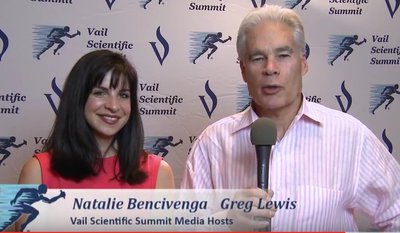Vail Scientific Summit 2017 Feature - Kirkland and Cooke

Many topics were discussed and dissected at the Third Annual Vail Scientific Summit hosted by the Steadman Philippon Research Institute in late August in Vail, Colo. The most common topic though – the one that seemed to attract the most attention and interaction from the leading scientists, researchers and surgeons that were in attendance – was aging.
In fact, the very first keynote speech of the event was given on the opening night of the Summit by Dr. James Kirkland, Director of the Robert and Arlene Kogod Center on Aging at the internationally renowned Mayo Clinic in Rochester, Minn. Kirkland’s presentation – titled “Senolytics, Chronic Disease, and Aging” – set the tone for the four-day event and opened the doors to much discussion on how this inevitable problem can be treated in the coming years.
“Aging is clearly the biggest risk factor for most of the chronic diseases and accounts for the bulk of morbidity, mortality and health costs in the U.S.,” said Kirkland. “Our goal is not to extend lifespan, because that would be a very tall order, but mainly to target age-related chronic diseases and potentially target them as a group.
“The particular fundamental aging process that my laboratory is interested in is a process called cellular senescence,” continued Kirkland. “We’re interested in developing drugs that target these cells and then taking them through to people to see if we can alleviate, prevent or delay age-related disorders as a group instead of picking them off one at a time.”
Kirkland noted how frustrating, costly and time-consuming it could be to attack one cause or disorder and have success doing so, only to then be immediately faced with other disorders.
“Our only real chance at effecting change is to group these disorders together and attack as many of them at one time as possible,” said Kirkland. “And we have had some success in doing that.”
Beyond the new treatments being researched by Kirkland and others, the question remains, how can people age well?
“There are common sense things like having a balanced diet and exercise,” said Kirkland. “The problem with lifestyle interventions is that they are very difficult to get people to follow. We know that if you eat a bit less, you are likely to live a bit longer.
“It’s very hard to convince people of these things adopted as public health policies,” added Kirkland. “For example, it took us over 40 years to convince people not to smoke. Some still aren’t convinced, but the data and the results are out there and many people know now that quitting smoking has extended their lives.”
There are other disorders out there that involve aging as well and these were discussed at the Summit.
One is progeria, a rare and progressive genetic disorder that causes children to age rapidly. Dr. John Cooke, Chair of the Department of Cardiovascular Sciences at the Houston Methodist Research Institute, has performed research on this particular disorder and is encouraged with his findings.
“In one of our latest projects,” said Cooke, “we took cells from these children with progeria. The kids usually die at the age of 13 or 14 from heart attack or stroke. These kids are young children trapped in the body of 80-year- old individuals.
“What is interesting about these children is their brains are unaffected,” continued Cooke. “They still have the optimism and hope of young children, they want to play with the other kids, they want to lay out on the lawn at night and look up at the stars and dream big dreams. But their life span is limited.”
Cooke’s breakthroughs in research involve telomeres.
“Telomeres are like the tip of a shoelace,” described Cooke. “You can’t lace up your shoes without the tips. As time goes on, the telomeres erode. Telomeres are the tip of the chromosome, like the tips of the shoelace. For chromosomes, you need this tip that protects it.
“This is a major determinant in aging. Our cells — just like everything in our bodies — have a shelf life,” continued Cooke. “Telomeres serve as the biological timekeeper. At some point, the telomere becomes so short that the cells cannot work properly and they become aged. And thus, they become problems. What we have learned is we can make cells young again by reversing that telomere shortening. We can rejuvenate them. It’s amazing that by extending that tip of the chromosome it can help to delay the aging process.”
This discovery will hopefully lead to some advances in battling progeria.
“We are applying what we further learn about telomeres in our study of progeria,” said Cooke. “We are making some baby steps and – as in all medical research – we continue to hope that our findings will lead to even better results that will help to cure this rare and deadly disorder.”
Aging itself is not a disease but its connection with illness in many forms gave the scientists, physicians and surgeons at the Scientific Summit plenty to talk about. And their discussions will continue beyond this meeting and will surely resume when the next Vail Scientific Summit rolls around.
“These types of meetings are always good places to develop collaboration,” said Cooke. “I’ve exchanged contact information with so many wonderful doctors and scientists during this meeting in Vail. I really look forward to the further exchange of ideas, results and theories. I’m a trained doctor but along the way I became a scientist and am fascinated with the progress we have made and the potential we have to help people. Attending and participating in conferences like this one in Vail always inspire me to dive even further into my research and work with the others to seek the solutions that we need.”

